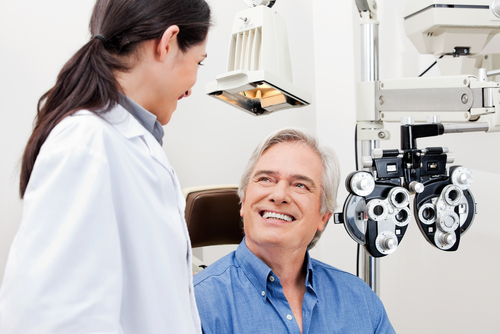This breakthrough in cataract diagnosis could save millions of dollars.
It seems that cataract detection is getting more precise and effective each and every year. This is not only good for eye doctors around the world who are trying to diagnose their patients efficiently and precisely, but also for the millions who have or will develop this common eye problem in the future.
The number of people who have cataracts is rising alongside the aging baby boomer population, and nearly half of all Americans will have the eye disease by the age of 80. Given these high numbers, it is no surprise that nearly 10 million cataract removal operations are performed globally each and every year. Therefore, it is more important than ever that cataract doctors are finding a way to diagnose cataracts early and are making the best decisions when it comes to whether or not a patient needs surgery.
Luckily, a new diagnostic tool is currently in the works that looks to measure cataracts at a molecular level and, for the first time, help give doctors an objective scale for which they can decide whether or not a patient needs to undergo cataract surgery.
New Cataract Diagnostic Tool
This new tool used for diagnosing cataracts has been researched by Professor Des Smith, Emeritus Professor of Physics, and Professor Rory Duncan, and will potentially help save millions of dollars in unnecessary cataract operations. This savings could also relieve pressure on health providers globally.
The tool itself relies on examining a fluorescence signal from proteins in the eye lens that are known to have a significant role in cataract formation. By looking into the changes to the photochemistry of the eye during cataract formation and documenting them for future use, the team will develop a clear, objective scale for cataract diagnosis―something that has not yet existed before.
The team is also working towards developing a non-invasive therapy of cataracts, and has received £3 million (a little less than $5 million) of funding from the UK Medical Research Council, the European Commission and a range of commercial partners.
Current Cataract Detection Methods
The most common way of cataract detection that eye doctors currently use is a comprehensive eye exam that includes the following factors:
- A dilated eye examination: Drops are placed in your eyes in order to widen (dilate) your pupils. From there, your eye doctor can look closely at your retina and optic never in order to identify any signs of damage.
- Visual acuity test: An eye chart test that measures how precise you can see at different distances.
- Tonometry: An instrument that measures the pressure inside of your eyes.
Depending on your age and vision problems you may be experiencing, your eye care professional may also do other tests to learn more about the health of your vision.
While the current tests above can certainly help to uncover cataracts in patients, a more precise and efficient method of cataract detection could be of great use to both doctors and patients all over the world. We look forward to seeing more about the results of this early cataract detection tool in the future.
In the mean time, if you or someone you know suffers from symptoms of cataracts, be sure to contact OCLI today to speak with one of our experienced eye care doctors.
